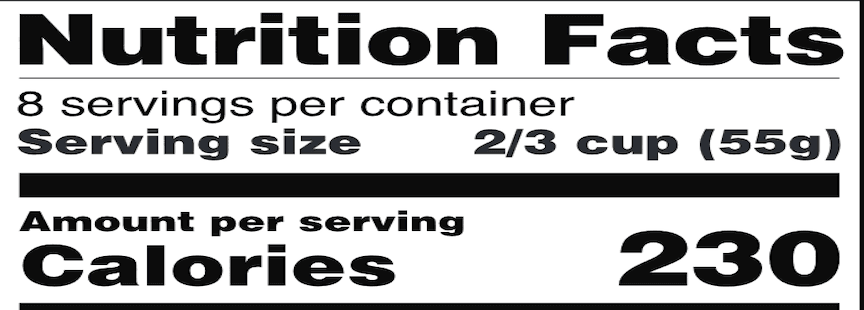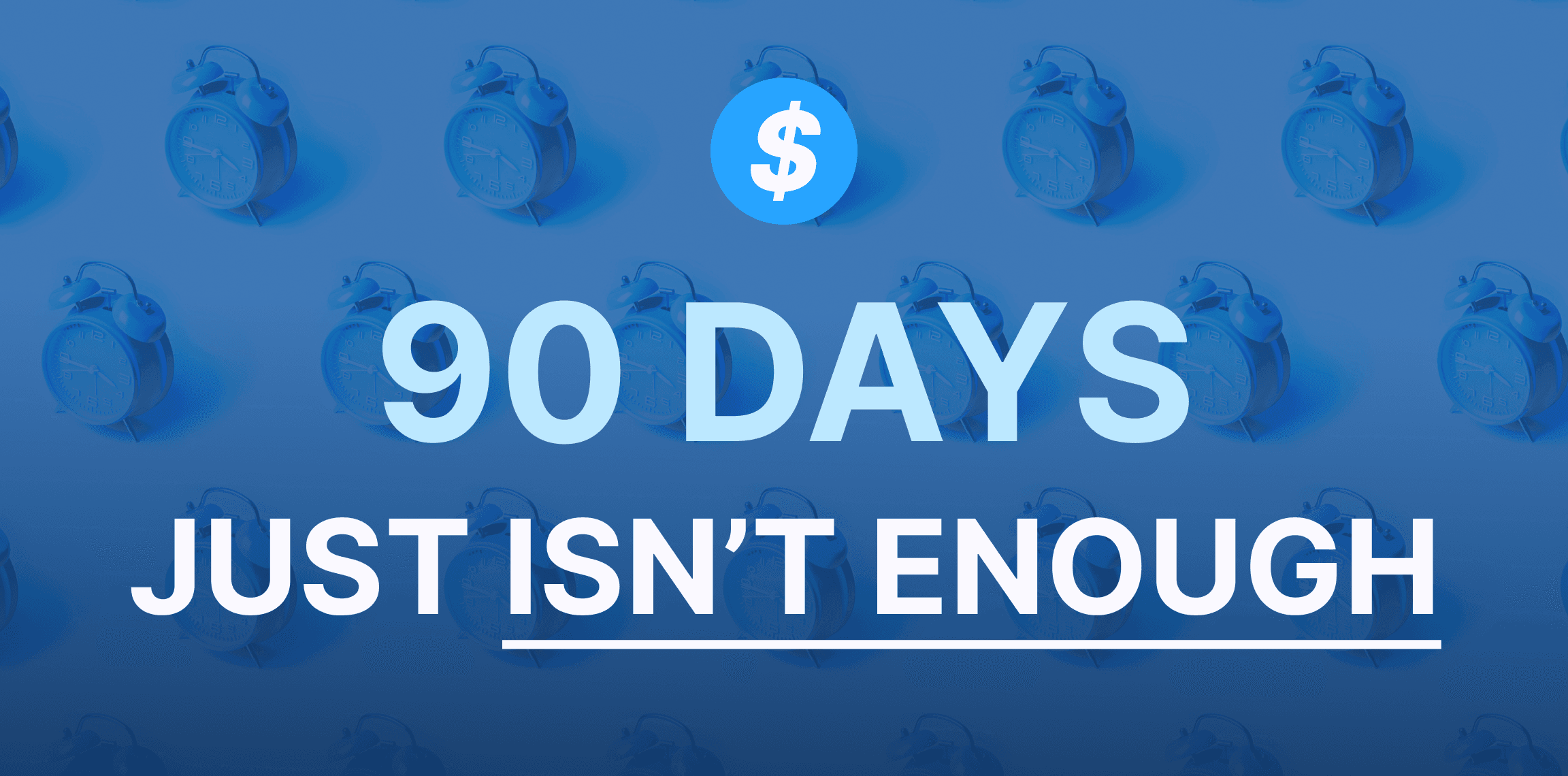Think you can complete your BEAD application in 90 days? Think again.
January 18, 2024
If you're waiting for your state's application, you'll be too late.

No matter where you go grocery shopping in the United States nowadays, whether it’s the biggest of chain supermarkets to the smallest of mom n’ pop shops, you can count on one thing: nearly all the packaged food that you can buy will have clearly displayed, black and white nutrition labels printed on it listing the calories, total fat, cholesterol, sodium, carbohydrates, and other ingredients.
These standardized nutrition labels were actually created relatively recently as a result of the 1990 Nutrition Labeling and Education Act, designed to help consumers make fully informed shopping decisions, and to be able to accurately compare different food products to one another. Nearly all producers of packaged food in the U.S. must comply with these requirements. Now, the Federal Communications Commission (FCC) wants to apply a similar kind of labeling to a very different product class: Broadband internet plans.
The FCC has been working over the last six years on developing a plan for what precise information the new “Broadband Nutrition Labels” would include. There was a vigorous commentary between advocacy groups on how the agency could best help consumers, and how, when, and where providers would be required to display such labels.
The Infrastructure Investment and Jobs Act passed by Congress in 2021 further spurred the process, as it directed the FCC to require standardized broadband plan labels from providers. On November 14, 2022, the FCC voted to enact them through a new order. There will be some additional modifications pending further commentary, but the basic framework has been established.
But high-speed internet plans are very different than food. What exactly is required in the FCC’s new Broadband Nutrition Labels? Which providers must comply? What information must providers display, when, where, and what are the possible penalties for failing to comply? Read on to learn more.
In the meantime, Ready.net is working towards helping providers follow the FCC's broadband nutrition facts label requirement. Providers will be able to incorporate the relevant subscriber plan information in a broadband nutrition facts label in our relevant products in the near future.
Where did the FCC post the new Broadband Nutrition Label requirements?
The full 87-page-long order document detailing all of the new standardized requirements, as well as various rationale and refutations toward organizations challenging the FCC during the public hearings and comment period held over the course of 2022, can be found on various pages on the FCC website.
The full order is here.
The hearings are available here.
Who must comply with the Broadband Nutrition Label order?
All providers offering fixed and mobile broadband plans for individual consumers and households — that is, any company offering broadband service delivered to a single location, like cable internet installed at your home or apartment from Spectrum or Optimum or smaller local providers, and mobile device plans for phones and tablets, like the 5G service on your smartphone from carrier companies such as AT&T, Verizon, T-Mobile, Cricket Wireless, etc.
The notable exception to these requirements is for enterprise service plans: broadband access, fixed or mobile, that is only available to enterprise customers, such as businesses, nonprofits, schools, healthcare facilities, and other organizations. The FCC, for now, says that enterprise internet plans do not have to follow the Broadband Nutrition Labels.
So, to review: for example, Verizon FiOS internet plans offered for households must comply with the new Broadband Nutrition Labels, while Verizon FiOS enterprise internet for organizations would not need to comply with them.
Importantly, the order applies only to plans currently being offered to new customers and any new plans that may be offered by providers going forward. Older plans that have been discontinued, or current plans that are no longer available to purchase by new customers, do not need to have Broadband Nutrition Labels created for them.
Finally, all Broadband Nutrition Labels must be retained by providers for a minimum of two years, according to the FCC.
When do providers have to begin posting the Broadband Nutrition Labels?
The FCC voted to adopt the new requirements in November 2022 and published a notice of its rulemaking in the Federal Register on December 16, 2022, with the rule going into effect on January 17, 2023. Nonetheless, the agency is still leaving the door open for replies to its own replies to previous comments until next week Tuesday, February 14, 2023.
Large providers are required to publish their labels within six months. Smaller providers are required to publish their labels within one year ('smaller' providers are defined as those with 100,000 or fewer subscriber lines).
Where must providers post their Broadband Nutrition Labels?
According to the FCC, providers must display the nutrition labels for any and all available plans on “both ISP websites and any other channels through which their service is sold, including ISP-owned retail locations, third-party owned retail locations, and over the phone.”
While the FCC leaves it up to the providers to choose the exact location on their website or physical media to display the Broadband Nutrition Labels, and how large or small the font size is, “providers should ensure that the labels are prominently displayed on any device on which the consumer accesses and views the labels, including mobile devices.”
Notably, the FCC says that as soon as a customer provides their service address to any provider or their representatives, the provider should then display the label of any associated plans that are offered at that location.
What information must the labels include?
Perhaps the most critical piece of information for providers to consider is the actual content of the labels. The labels follow a fairly simple and similar looking format as the FDA food nutrition labels described above, but with different categories, including (in the following order):
What do the new Broadband Nutrition Labels look like?
The FCC requires that providers all follow the same format when posting their labels, including the same fields, colors (black and white), and arrangement of information. This is to ensure consumers can accurately compare plans side-by-side. The FCC included the following example format — though note that the red text is simply to show where providers must input their own information in black. Importantly: the order states that the information must be “machine readable,” that is, scannable by a computer program using optical character recognition (OCR), presumably to allow for other apps and software programs to help consumers compare plans.

What are the penalties for providers that fail to comply with the Broadband Nutrition Label order?
The FCC does not specify what fines, fees or penalties providers that do not comply with the Broadband Nutrition Label order will face, instead deferring to its existing authority and enforcement mechanisms.
As the order states, “we find that our existing enforcement mechanisms should enable us to enforce our new label requirements, including the accuracy of the label’s content and the sufficiency of its format and display location. We thus will use the identical procedures to enforce the broadband label requirements adopted here.”
But what are those “existing enforcement mechanisms” and how would they apply to providers that are accused of running afoul of the labels, either in completeness, accessibility, or accuracy?
The FCC has its own Enforcement Bureau that conducts investigations and may issue subpoenas to organizations and individuals accused of violating its requirements. It also has an Investigations & Hearings Division responsible for taking “enforcement actions” against violators, including “forfeiture orders,” essentially a fine, the value of which is “case specific.”
In footnotes of the Broadband Nutrition Label order, the FCC notes that penalties for violators should be “sufficient to deter noncompliance,” yet not so minimal “as to constitute a cost of doing business for providers,” suggesting they could be high.
How will the FCC evaluate internet service plans to ensure they are complying with the information listed on the labels?
The FCC doesn’t state whether it will on its own run any speed or latency tests on providers to ensure they are complying with the information provided in their labels.
However, the order states that the agency will accept and investigate individual complaints from consumers “as vigorously as we do other informal complaints.” Consumers can file complaints using the FCC’s existing online forms here.
Other enforcement actions
There’s a possibility that the labels make providers subject to enforcement actions from other government entities, however.
For example, state attorneys general across the country have said that they’re investigating providers who have engaged in a number of practices, such as enforcing data caps.
Also, Connecticut Attorney General William Tong has launched an investigation into Optimum Altice for allegedly misrepresenting its internet services.
“The overwhelming number of complaints relate to consumers who have not received advertised speeds for Optimum 300 megabits per second and Optimum 400 megabits per second, cable internet plans they paid for,” Tong said.

January 18, 2024
If you're waiting for your state's application, you'll be too late.

January 09, 2024
The big sky state joins a small list of eligible entities that have kicked off their broadband challenge process.